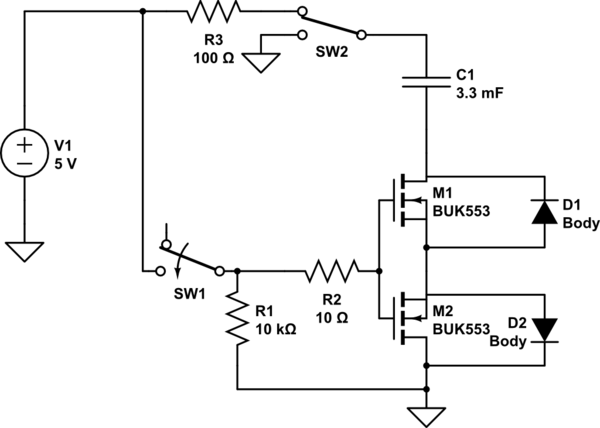I built this circuit at home to for science (I explicitly drew the body diodes for clarity).

simulate this circuit – Schematic created using CircuitLab
Imagine the following scenario:
At time t0, SW1 is closed, thus driving both NMOS's gates to 5V (turning on the MOSFETS), and SW2 is connected to 5V. Capacitor C1 charges over time to ~5V.
At time t1, C1 is fully charged, and SW1 opens. Sufficient time is given s.t. the gate voltage on the NMOS goes to 0V.
At time t2, SW2 is connected to GND, while having SW1 still open.
Intuitively, at time t2, I would expect very little current (i.e. < 1uA) to leave the capacitor since it is effectively disconnected from GND.
However, when I measure the voltage drop across C1, I see a significant and rapid drop (down to about 2.5V), in about 0.5 second.
Why is this? According to the datasheet for the BUK553 MOSFET, the Zero gate voltage drain current should be at most 10uA at room temperature.
